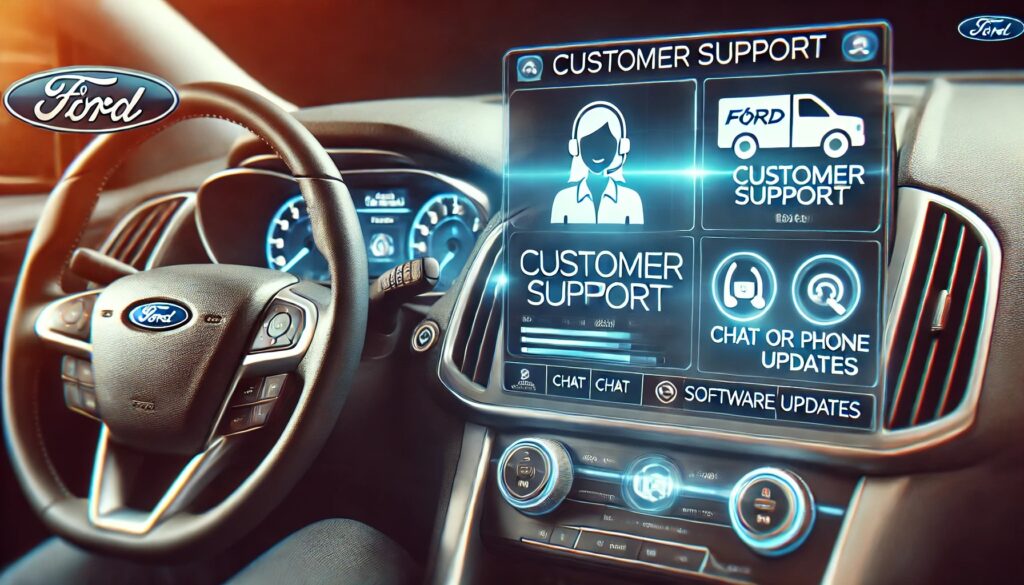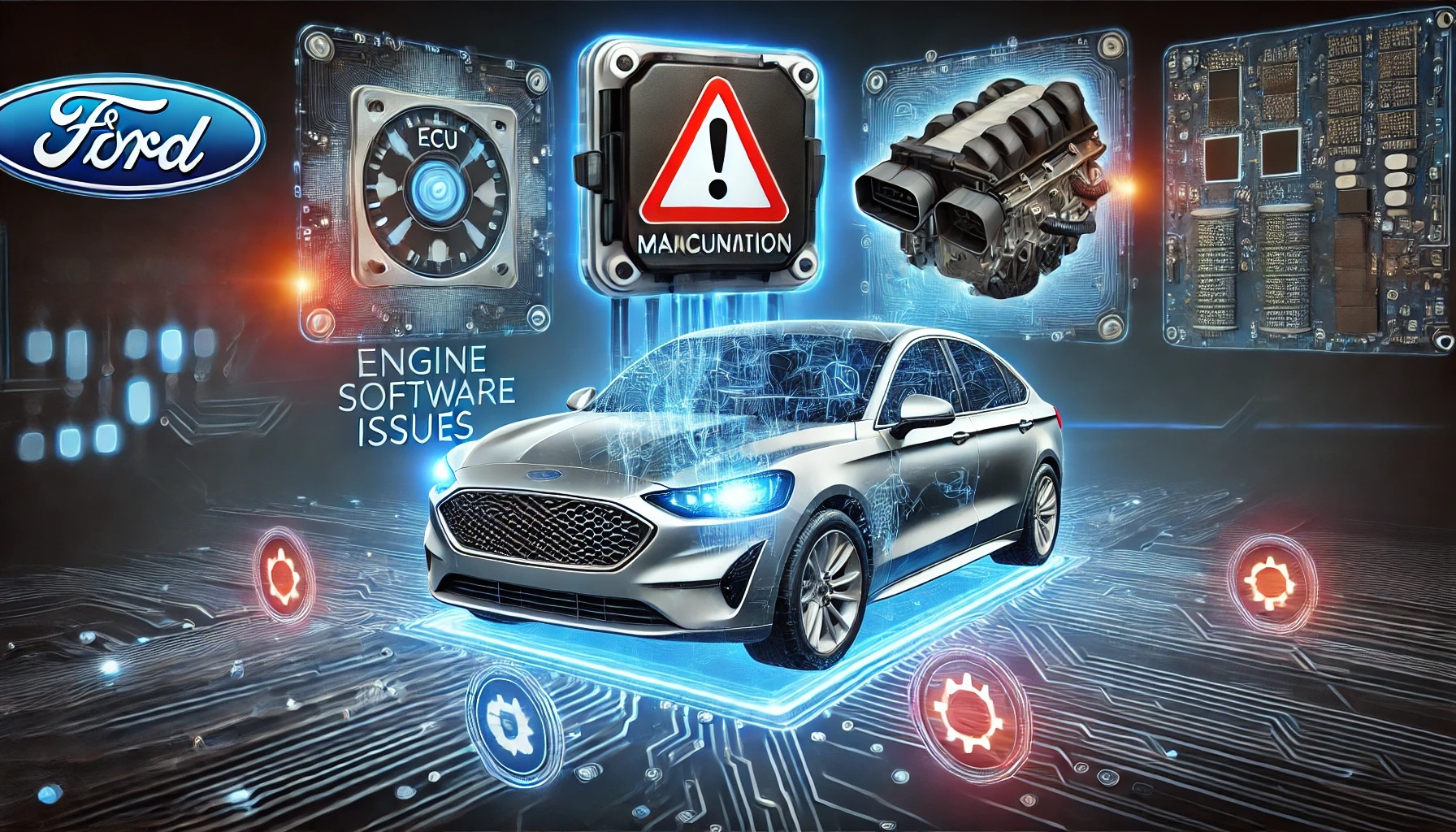Ford Engine Software Issues: Causes, Solutions, and Common Problems often involve ECU malfunctions, affecting fuel efficiency, power, and transmission. These issues can be resolved with software updates, dealer assistance, and regular maintenance. Stay informed about recalls and updates to keep your vehicle running smoothly.
Stay tuned with us as we dive deeper into Ford engine software issues, exploring their causes, solutions, and common problems. We’ll also provide helpful tips to ensure your vehicle runs smoothly and efficiently. Keep reading to learn more!
What Is The Role Of Ford’s Engine Control Unit (Ecu) And Its Impact On Performance?
The Engine Control Unit (ECU) is a crucial component in modern Ford vehicles, acting like the “brain” of the engine. Here’s a simplified explanation of its role and impact on performance:
What is the ECU?
The ECU is an electronic device that manages various functions of the engine. It uses data from multiple sensors to ensure that the engine runs smoothly and efficiently.
Key Functions of the ECU
- Fuel Injection Control: The ECU regulates how much fuel is injected into the engine. It adjusts this based on factors like air intake and engine temperature to achieve optimal combustion, which helps maximize power and minimize emissions.
- Ignition Timing: It controls when the spark plugs ignite the fuel-air mixture in the engine cylinders. Proper timing is essential for efficient performance and power output.
- Airflow Management: The ECU monitors the amount of air entering the engine and adjusts fuel delivery accordingly to maintain the ideal air-fuel mixture.
- Diagnostics: The ECU continuously checks for any issues within the engine. If it detects a problem, it generates fault codes that can help mechanics diagnose and fix issues quickly.
Impact on Performance
The performance of a Ford vehicle heavily relies on the ECU’s ability to manage these functions effectively. A well-functioning ECU ensures:
- Better Fuel Efficiency: By optimizing fuel injection and combustion, it helps save fuel.
- Increased Power: Proper ignition timing and fuel management lead to better acceleration and overall power.
- Reduced Emissions: Efficient operation means fewer harmful emissions are released into the environment.
- Smooth Operation: Continuous monitoring helps prevent stalling or rough idling, contributing to a more pleasant driving experience.
How Can I Identify Software-Related Ecu Issues In My Ford Vehicle?
You can tell if there’s a problem with your car’s ECU (the “brain” of the engine) by watching for these signs:
- “Check Engine” Light: If this light turns on, it’s a big clue that something might be wrong with the ECU.
- Car Feels Weak: If your car doesn’t accelerate as it should or feels less powerful, it could be an ECU issue.
- Bad Fuel Mileage: If your car uses more fuel than usual, the ECU might not be working correctly.
- Engine Trouble: Problems like rough idling (the car shakes or feels uneven while running), stalling, or difficulty starting.
- Weird Gear Shifts: If your car’s automatic transmission shifts at strange times, it could be due to the ECU.
If you notice any of these, it’s a good idea to take your car to a mechanic or Ford dealer to get it checked out.
Are Ford Sync System And Ecu Updates Interconnected?
Yes, the Ford SYNC system and the Engine Control Unit (ECU) updates are interconnected, but they serve different functions in your vehicle. Here’s a simple explanation:
What is the SYNC System?
The SYNC system is the infotainment technology in Ford vehicles. It allows you to connect your smartphone, use navigation, control music, and access various apps through a touchscreen interface. Regular updates to the SYNC system improve its features and fix bugs.
What is the ECU?
The ECU is like the brain of your vehicle’s engine. It controls how the engine operates, including fuel injection and ignition timing. Updates to the ECU can enhance engine performance, fuel efficiency, and reliability.
How Are They Connected?
- Software Updates: Both the SYNC system and ECU receive software updates. While SYNC updates focus on improving infotainment features, ECU updates are aimed at enhancing engine performance and addressing technical issues.
- Communication: The SYNC system and ECU communicate with each other to ensure that vehicle functions work smoothly. For example, if there’s an issue with the engine (detected by the ECU), it might affect how certain features in SYNC operate.
- Diagnostic Information: The SYNC system can display diagnostic information from the ECU. If there’s a problem with the engine, such as a check engine light being triggered, SYNC can alert you about it.
What Are Common Issues Encountered During Software Updates?

When updating software, whether for your computer or vehicle systems like Ford’s SYNC, you might encounter several common issues. Here’s a simple breakdown of these problems:
Error Messages:
You might see messages on your screen indicating that the update has failed or that there is a problem. These messages often include specific codes that can help identify the issue.
Failed Installation:
Sometimes, the update process starts but doesn’t finish correctly. This can leave your software in an incomplete state, which may cause it to malfunction.
Insufficient Storage Space:
Updates often need a certain amount of free space on your device to install properly. If there isn’t enough space, the update will fail.
Corrupted Files:
If the files needed for the update are damaged or corrupted (perhaps due to a bad download), the installation may not work.
Network Issues:
A slow or unstable internet connection can interrupt the download process, leading to incomplete updates or errors.
Compatibility Problems:
Sometimes, the new update may not be compatible with your existing software or hardware. This can cause conflicts that prevent the update from working properly.
Security Software Interference:
Antivirus programs or firewalls might mistakenly block updates, thinking they are harmful. This can prevent the installation from completing.
System Slowdown:
After a failed update attempt, your device might run slower than usual or become unresponsive.
Crashes or Reboots:
In some cases, your system may crash or restart repeatedly after an unsuccessful update.
How Can I Resolve Failed Software Updates In Ford Vehicles?
If a software update fails in your Ford vehicle, here’s what you can do to fix it:
- Check the Connection:
- Make sure your car is connected to a strong internet or that your USB drive is properly inserted.
- If you’re using a USB drive for the update, make sure it’s formatted correctly (usually FAT32) and has enough space.
- Perform a Master Reset:
- If the update is for the SYNC system (the infotainment part), try doing a master reset of the system. This can help clear up any issues before you try the update again.
- Reinstall the Update:
- After resetting, try the update again. If you’re using a USB drive, make sure the update files are up to date and correctly placed on the drive.
- Check for Battery Power:
- Make sure your car’s battery is sufficiently charged during the update. A low battery can cause the update to fail.
- Visit the Dealership:
- If nothing works, it’s best to take your car to a Ford dealership. They can help with updates that didn’t work or if there’s an issue with the software itself.
What Steps Can I Take To Prevent Software Issues?
To prevent software issues in your Ford vehicle, here are some simple steps you can take:
- Keep Your Vehicle Updated: Regularly check for software updates and install them as soon as they are available. This keeps your car’s system running smoothly and helps prevent problems.
- Enable Notifications: Make sure you have notifications turned on in the FordPass app or your car’s system. This way, you’ll be alerted when updates are ready.
- Check for Recalls: Sometimes, software issues are part of a recall. Make sure to check for any recalls related to your car by entering your VIN (Vehicle Identification Number) on Ford’s website.
- Use the Right Tools: When updating your car’s software with a USB drive, ensure the drive is formatted correctly and has enough space. Use official sources for downloading updates.
- Take Care of Your Car: Regular maintenance, such as keeping your car’s battery in good condition and ensuring the car’s electrical system is functioning well, can help avoid software problems.
Are Ford Vehicles Compatible With Over-The-Air (Ota) Updates?
Yes, some Ford vehicles are compatible with over-the-air (OTA) updates, which means they can receive software updates automatically without needing to visit a dealership.
- Newer Ford Models: Vehicles like the F-150 Lightning and Mustang Mach-E can get updates directly through the car’s internet connection. These updates can improve features like the SYNC system, add new apps, or fix issues.
- Older Models: Older Ford cars may not support OTA updates. They usually require manual updates, which you can do using a USB drive or by going to a dealership.
If your Ford is capable of OTA updates, you’ll get a notification when it’s time to update, and the car will do it automatically while parked and connected to Wi-Fi.
What Support Does Ford Provide For Addressing Software Issues?

Ford offers several types of support if you’re having software issues with your vehicle:
Free Software Updates:
If there’s a software problem, Ford often provides free updates to fix it, especially if your car is under recall for a software issue.
Warranty Coverage:
If your car’s software issues are covered by the warranty, Ford will repair or update the software at no cost to you.
Dealer Assistance:
If you’re having trouble with a software update or the SYNC system, you can visit a Ford dealership. They can help troubleshoot, install updates, or fix any software-related issues.
Ford Customer Support:
You can also contact Ford’s customer service team for help. They can guide you through the process or help you find a solution to your software problems.
How Does Ford Address Concerns About Engine Software Reliability?
Ford works hard to fix any problems with engine software and make sure your car runs smoothly. Here’s how they do it:
- Recalls: If there’s a big issue with engine software, Ford will issue a recall. This means they’ll contact you to fix the problem for free, either by updating the software or replacing parts if needed.
- Free Software Updates: Ford regularly offers free software updates to fix bugs or improve how your engine runs. This helps fix problems like poor fuel efficiency or engine performance.
- Extended Warranties: If your car has software-related issues that are expensive to fix, Ford may offer an extended warranty. This means they’ll cover the repair costs for a longer period, so you don’t have to worry.
- Quick Fixes: If there’s an urgent software problem, Ford takes quick action, often sending you a notice or fix before the problem becomes serious.
Can Software Issues In Ford Vehicles Impact Safety?
Yes, software issues in Ford vehicles can sometimes impact safety. Here’s how:
Unexpected Stalling:
If there’s a problem with the engine software, your car might stall or suddenly lose power while driving, which can be dangerous, especially in traffic.
Transmission Problems:
If the software controlling the transmission doesn’t work correctly, your car might shift gears unexpectedly, causing jerking or making it harder to control.
Loss of Engine Power:
A software issue can make the engine feel weak, and you may not have enough power to speed up or drive up a hill, which can be risky in certain situations.
Braking and Control:
In some cases, the software that helps with braking or stability may fail, making it harder to control your car, especially in emergencies.
FAQs
1. Can I update my Ford vehicle’s software myself, or do I need to go to a dealership?
Some Ford vehicles allow for over-the-air (OTA) updates, particularly newer models like the F-150 Lightning and Mustang Mach-E. However, if your vehicle doesn’t support OTA updates, you may need to download updates to a USB drive or visit a dealership for manual installation.
2. How often should I check for software updates in my Ford vehicle?
It’s a good idea to check for updates every 3-6 months or whenever you hear about new recalls or fixes for your vehicle. Some updates might improve performance or add new features, so staying updated ensures your vehicle runs optimally.
3. What if my Ford vehicle is out of warranty but still has a software issue?
Even if your vehicle is no longer under warranty, Ford may still offer software updates or fixes for certain issues, especially if they’re linked to recalls or known defects. It’s best to contact a Ford dealership to see if you qualify for a free update or fix.
4. Can a software issue cause my Ford vehicle’s transmission to behave oddly?
Yes, ECU software problems can cause erratic shifting, rough gear changes, or even delayed shifting. If you notice strange behavior while driving, like jerky or sudden shifts, it’s a good idea to get the vehicle checked for software-related issues.
Conclusion
In conclusion, Ford engine software issues have received mixed reviews. While many appreciate Ford’s efforts with recalls, free updates, and extended warranties to fix problems like stalling, poor fuel efficiency, and shifting issues, others express frustration with repeated recalls, delayed updates, and inconsistent customer service. Despite efforts to improve, software-related challenges have led to some concerns about reliability. Staying informed about updates and recalls can help manage these issues.
